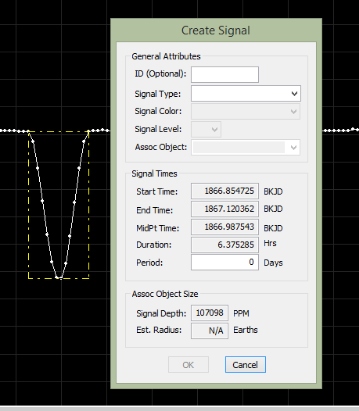Planet Hunters forum Talk member Daryll LaCourse (Nighthawk_black) has converted all the Kepler Two Engineering Test Data and it is now available online for analysis at Planet Hunters.
Daryll LaCourse:
Daryll LaCourse:
" In early February an engineering test for two-wheel Kepler recorded 9 days of observations for ~2000 stars near Pisces. The original reduction pipeline is not suited to process this batch of data and will need to be overhauled (see this thread for the nitty gritty), but there is still some scientific value here and Martin Still has challenged the community to take a look. I think we should have a go at this! "
To that end I've extracted light curves from all of the available target pixel files using a brute force macro and piece of software available on the GO website called PyKE. The same 15x15 dimension pixel mask was applied on all targets; some have a secondary LC included that is slightly smaller. The complete output batch is 168mb worth of .FITS files and can be downloaded as a single .ZIP archive, or browsed individually.
.ZIP bundle Individual files
A grab bag of previously studied objects, including one confirmed planet hosting star called Wasp-28, were chosen for the target list and the catalog is broken up into the following sections:
EB
SC_target (short cadence)
Variable_Simbad
Multiple_Stars
Hot Stars
Cool Stars
Red Giants
GKM_dwarf
Eng_target
If you have recently joined the team or are a veteran but have previously only used the Classify and PH Talk interfaces, a 3rd party application will be required to look at these new stars. I would recommend downloading both of the following freeware utilities to experiment with:
TOPCAT by Mark Taylor: Stands for 'Tool for OPerations on Catalogues And Tables'. This program consists of a standalone Java file and for the purposes of these light curves it does not matter if you choose the Full or Lite version. Being that the former is only 26mb I would just grab that one. Should work on both Windows and Mac OSX.
LcTools by PlanetHunter Al Schmitt: This is a Windows based lightcurve viewer and signal processor developed for the Kepler project that Al has graciously updated for use with this data set. To install the software, please contact Al at aschmitt@comcast.net . You will notice that LcTools reduces FITs files to a smaller text format via 'LcGenerator'; I've already converted the bundle so it won't be necessary for everyone to do this. Once you have installed the product, just open this additional .ZIP file and follow the Readme.txt instructions.
A few things to consider when hunting around in these light curves:
If you want a particular star redone with a different mask size or a series of them, send me a PM and I will try to accommodate.
- Significant artifacts exist in ~25% or more of these LCs; in some cases the target was not in the center of the mask or more commonly artifacts have corrupted the observations. The former I can go back and fix manually with PyKE, but the latter will require a true dynamic pipeline to address properly. Also note that there are four negative outlier data points in my test files (BJD 1861.91, 1863.87, 1865.83 and 1867.79), so you will need to zoom in past those if using TOPCAT. If using LcTools for browsing, those outliers have been culled away and won't be an issue.
- The extraction masks are large compared to legacy data and applied in a generic fashion, as a result I expect a significant number of LCs have flux from neighboring sources that were blended in. The total degree to which this is going on is tough for me to judge at the moment; some of the point sources here are as dim as 18 while others are as bright as 9 !
- Most if not all of the interesting variables in the first four sections of the catalog are already noted in literature and such information can usually be found with an RA / Dec crosscheck on handy databases like the VSX website,.
- While these '"Two-wheel Concept Engineering Test" files do have EPIC numbers assigned, you will not find them on MAST in the new EPIC catalog area.
Have fun! "
You can visit this thread at Planet Hunters forum Talk and participate in the analysis here.

